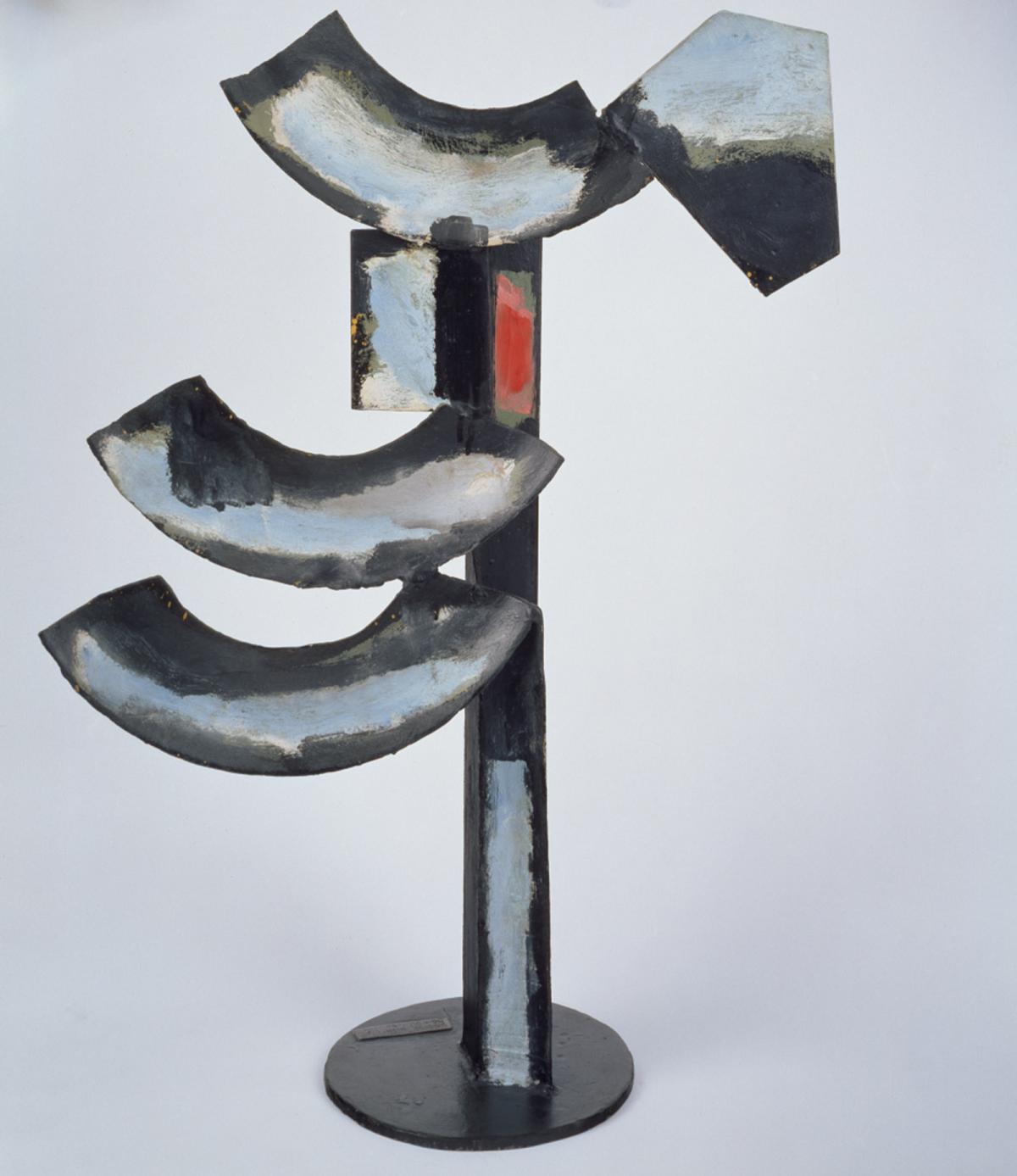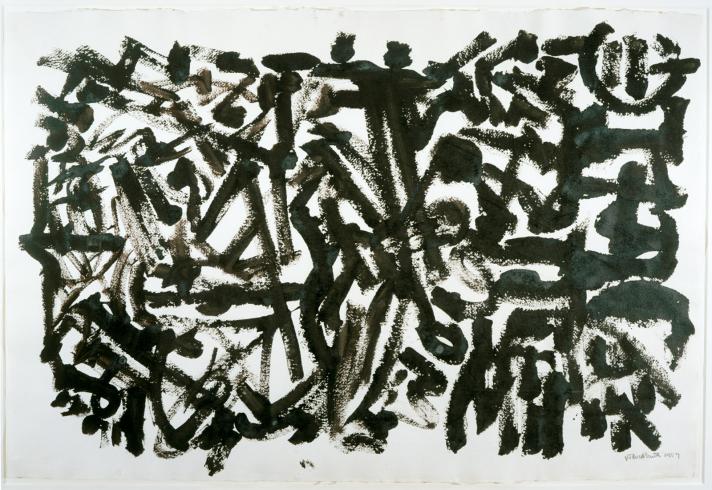David Smith
Invents

David Smith Invents explores an extraordinarily fertile period in the career of the sculptor David Smith (1906–65) from the early 1950s to the early 1960s.
About the Exhibition
David Smith Invents explores an extraordinarily fertile period in the career of the sculptor David Smith (1906–65) from the early 1950s to the early 1960s. On exhibit are 40 works, including sculptures, paintings, drawings, and Smith’s own photographs of his sculptures.
Smith famously recognized no distinction between sculpture, painting, and drawing, except for one dimension, asserting that the act of creating does not change just because the medium changes. Instead, he used such widely varying materials as steel, bronze, oil paint, aerosol spray enamels, ink, and tempera to explore his ideas in two and three dimensions.
The work of Smith’s last 15 years used an increasingly simplified vocabulary of predominantly geometric forms. In the first part of the 1950s, he was particularly captivated by concave and convex forms, from which he produced endless variations on volume, shape, line, and contour, without employing solid mass. In the works in this exhibition, concave and convex shapes play out in two and three dimensions in multiple configurations and repetitions, moving freely between media.
At the heart of David Smith Invents is Bouquet of Concaves(1959), a recent gift that is the first Smith sculpture in the museum’s collection. Never previously exhibited after Smith’s death in 1965, the sculpture is united here for the first time with two related works that will be equally new to visitors—Bouquet of Concaves II (1960), and Black Concaves (1960). These three works are among Smith’s most important, but little known, steel sculptures during his transition from anthropomorphic, figurative works in the early 1950s to relief-like abstract sculptures at the end of the decade; those, in turn, precede the large-scale steel abstractions for which he is best known. Three other Smith sculptures from this productive time—Tanktotem IV (1953),Auburn Queen (1954), and Raven V (1959)—explore concave and convex forms in more figurative works.
Smith wrote that Bouquet of Concaves inspired him to think of concave forms in new configurations and unities on a monumental scale. He also included it in the feature article thatArts magazine did on him in February 1960—the first cover thatArts ever devoted to a single artist. This special issue of the magazine will be on display as part of the exhibition. Recognizing it as a unique opportunity to shape the presentation of his work to a larger audience, Smith contributed many photographs and notes on his recent works, including annotated photographs ofBouquet of Concaves in progress and in finished form.
David Smith Invents is the first exhibition of Smith’s work in Washington, D.C., in 25 years. The exhibition is organized by The Phillips Collection; the curator is Susan Behrends Frank, Ph.D., associate curator for research. A 112-page catalogue accompanies the exhibition and is available in the Museum Shop.









